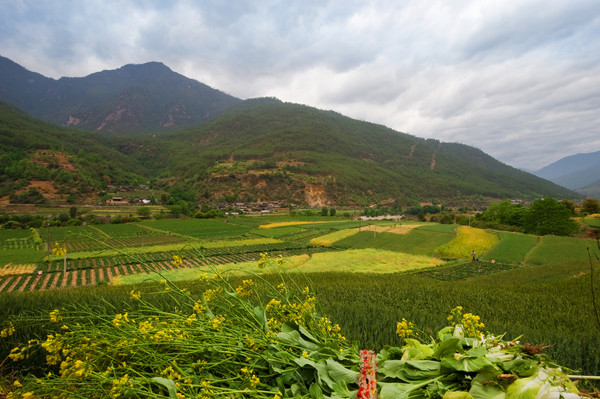
Agricultural engineering in China: the weight of the Made in Italy
After three years of growth at full capacity, in 2014 the Chinese tractor market "takes a breather". Meanwhile, the weight of Italian companies in the Chinese agromechanical sector continues to grow. The first five months of 2015, the italian exports increase of 53%
A pause for reflection for the Chinese market for tractors over 18 horsepower. After three years of growth at full capacity, where between 2011 and 2013 sales increased by 64%, from 320 thousand units to over 524 thousand, for a total value estimated by the VDMA at 16 billion euros (including operating machines), in 2014 the sector “took a breather”, stopping at a level of 524,600 units, remaining essentially unchanged over the previous year. However, despite this pause, China was once again confirmed in 2014 as the second global player, with a share of 24.6% of worlwide demand, after India (593 thousand units for a share of 27.8%).
A temporary stop
According to the forecasts by Agrievolution, the international association that includes manufacturers of agricultural machinery from the most important countries in the world, the slowdown of Chinese agromechanics should continue during 2015, due to temporary factors related to agricultural production profitability in the northern regions of the country, and should affect particularly the lower power ranges. At present it seems that the slowdown in growth represents a temporarily pause, due to a weak economy, and not a trend expected to continue over time. As shown in a FederUnacoma report drawn up after the 2014 edition of the CIAME exhibition (the exhibition of reference in China for mechanization), the Chinese primary sector, which has also made important progress on the systematic use of mechanical equipment in the countryside (according to data from the VDMA, last year the overall rate of mechanization reached 61%), continues to be characterized by a strong demand for technology. On the other hand - says the FederUnacoma report - although in recent years Beijing has given a boost to industrial development, the agricultural sector continues to have a strategic importance for the country, and in rural areas the use of science and technology is limited by innovation processes that still advance at a slow pace. Modernizing farming is a need that is all the more compelling when you consider that a large proportion of arable land in the country (16%) is prone to severe forms of pollution caused by erroneous farming systems and the inadequate technological support used in the past. In addition, a systematic and large-scale use of appropriate mechanical equipment would not only increase productivity and yields of the primary sector, but would render arable land that is currently unproductive (especially in the northern parts of the country).
Tractors
China relies on Italian products. To achieve these objectives, the Chinese government has allocated for the decade 2004-2013 the equivalent of more than 13.4 billion euros, of which three billion for 2013 alone, as grants to purchase agricultural equipment. A significant injection of liquidity aimed at improving the structure of Chinese agriculture, guiding farms towards the adoption of increasingly professional and specialized production practices. This is evidenced by a fleet that is always oriented towards medium and large tractors with paired agricultural equipment (it grew respectively by 9.5% and 8.2%, for a total gross output of 1,06 billion kilowatts in 2013) and the increase in the number of agricultural equipment cooperatives (41 thousand) that provide highly specialized services and are becoming a new player in the Chinese agricultural scenario. In a landscape characterized by a growing demand for mechanization and technology for agriculture, Italian manufacturers, some of which are already present in China with their own production plants, line up to play a leading role in the agromechanical sector of the Asian giant. In 2014 the tractor sector and the agricultural machinery experienced a positive trend, with Italian exports reaching their peak over the last decade, in value (65 million euros).
And the ISTAT figures for the first five months of 2015, point to a further improvement on the record reached in 2014 seeing that total exports of agricultural machinery climbed by 53%, 52.4 million euros.
The “currency uncertainty”
China continues to be a market to be observed carefully, to deepen the perception of the change underway.
The worsening of the economic conditions, which became evident in recent weeks, could be reflected on the agromechanical sector.
The devaluation of the local currency pinned until now to the dollar, and the heavy and repeated drops in the stock exchange, are the confirmation of a substantial slowdown in the Chinese economy, whose growth, according to IMF estimates cited by media reports, is expected to slow down to 6.8% in 2015 and 6.3% in 2016, i.e. the lowest level ever reached in the last twenty years. If and how this crisis will reverberate on the real economy, and thus on demand for goods and services, is not yet clear, nor is it clear which areas might be affected and to what extent the mechanization market may be affected.
At the moment, the only certainty seems to be the devaluation of the renminbi that, in fact, has made less competitive the imports of agricultural machines, and not just those from our country.
In the coming months it will be possible to understand whether and how the structure of demand for agricultural mechanical equipment will change, and which players will be able to meet the challenge posed by the profound changes taking place, focusing precisely on the demand for cutting-edge technologies that are necessary to the strengthening of Chinese agriculture.








